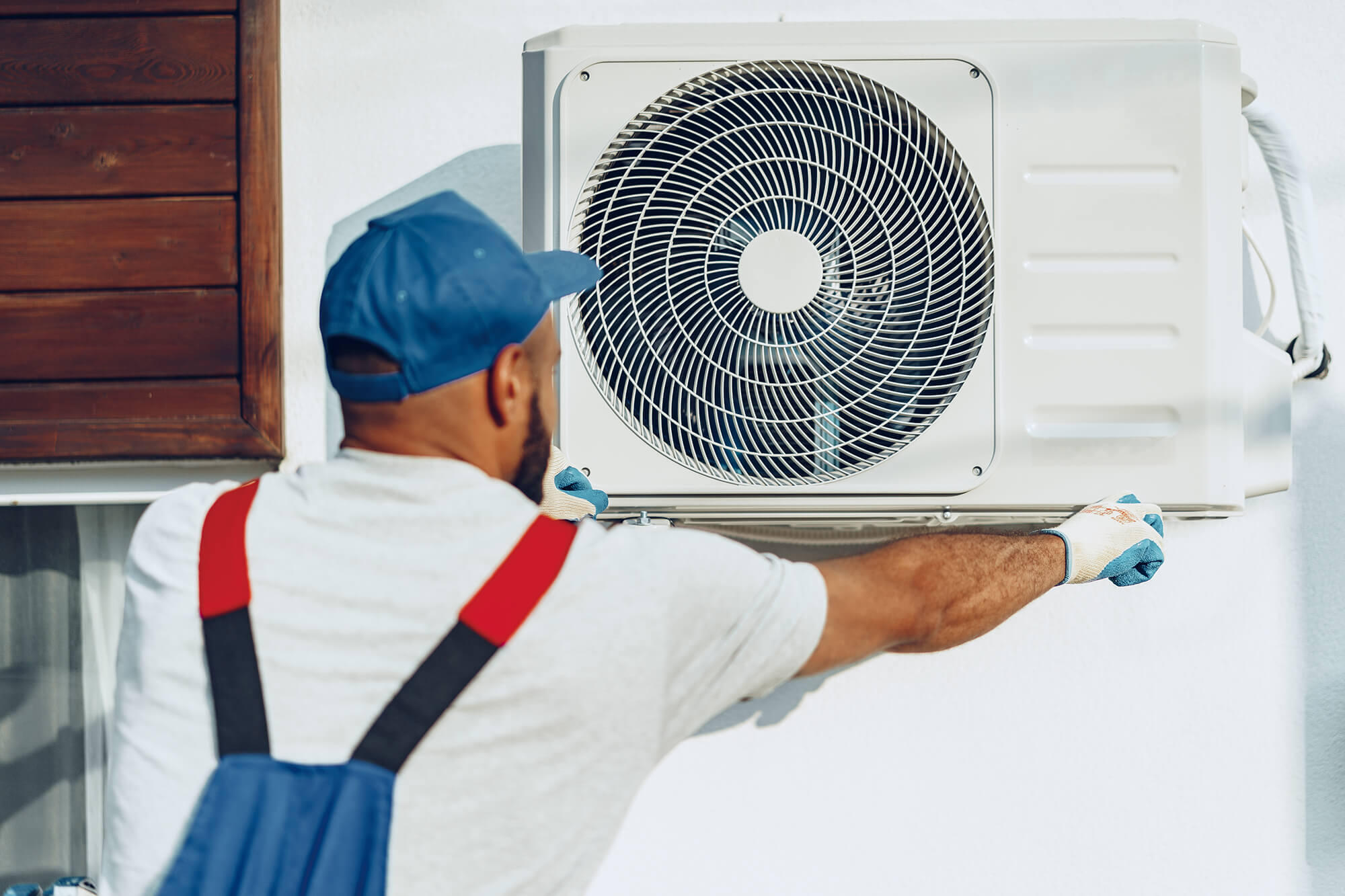
THE PRODUCT:
Residential central air conditioners (CACs) and heat pumps (HPs) (<65,000 Btu/hr) can be ducted or non-ducted (ductless). Most CAC systems are “split systems,” where the condensing unit is typically placed outdoors while the evaporator is indoors. There are also packaged units, which include all of the components as part of a single package and which are often placed on rooftops.
Residential CACs and heat pumps also include the smaller categories of single-phase space-constrained products and small-duct, high-velocity (SDHV) products.
THE STANDARD:
The current standards for CACs and HPs took effect on January 1, 2023. The standards were based on a consensus agreement between manufacturers and efficiency advocates. The standards for split systems include a regional component, with the SEER2 more stringent for split-system CACs installed in the south than in the north (Table 1). Split-system and packaged CACs installed in the southwest have an additional standard for EER2. Heat pumps have a uniform national standard for heating and cooling modes (Table 2). For CACs and heat pumps that are packaged units, the standards are also uniform nationally. The standards for space-constrained and SDHV products are uniform nationally (Table 3), and are equivalent in stringency to the previous standards.
Table 1. Central AC requirements
| North | Southeast | Southwest | |
| SEER2 | 13.4 | Split-system:14.3 (<45kBTU) and 13.8 (≥45 kBTU) Packaged:13.4 | Split-system:14.3 (<45kBTU) and 13.8 (≥45 kBTU) Packaged:13.4 |
| EER2 | Split-system:11.7 (<45kBTU) and 11.2 (≥45 kBTU); if SEER2>15.2, EER2 9.8 Packaged:10.6 |
Table 2. Central heat pump requirements
| National | |
| SEER2 | Split-system: 14.3 Packaged: 13.4 |
| HSPF2 | Split-system: 7.5 Packaged: 6.7 |
Table 3. Space-constrained and SDHV requirements
| National | |
| SEER2 | Space-constrained CAC: 11.7 Space-constrained heat pump: 11.9 SDHV CAC and heat pump: 12.0 |
| HSPF2 | Space-constrained heat pump: 6.3 SDHV heat pump: 6.1 |
**The cooling energy efficiency metric, seasonal energy efficiency ratio 2 (SEER2) is the total space cooling required during the cooling season, expressed in Btu, divided by the total electrical energy consumed by the air conditioner or heat pump system during the same season, expressed in watt-hours.
The additional cooling energy efficiency metric that applies in the southwest, energy efficiency ratio 2 (EER2), measures full-load efficiency at a 95 °F ambient outdoor air temperature.
The heating energy efficiency metric, heating seasonal performance factor 2 (HSPF2) is the total space heating required during the heating season, expressed in Btu, divided by the total electrical energy consumed by the heat pump system during the same season, expressed in watt-hours.
KEY FACTS:
The new metrics (SEER2, EER2, and HSPF2) better capture fan energy consumption and the use of electric resistance heating in heating mode compared to the older SEER, EER, and HSPF metrics.
CACs and HPs are rated by their cooling capacity (in Btu/hr), which represents the amount of heat that an air conditioner or heat pump can remove from an enclosed space per hour. One “ton” of cooling capacity is equal to 12,000 Btu/hr. Compared to older units, products meeting the latest standards generally incorporate improved compressors and expansion valves and better and larger heat exchangers.
Filings
ASAP Press Releases
Standards in the News
Timeline
| Federal | Date |
| Next Review Due | 2023 |
| 4th Federal Standard Effective | 2023 |
| 4th Federal Standard Adopted | 2017 |
| 3rd Federal Standard Effective | 2015 |
| 3rd Federal Standard Adopted | 2011 |
| 2nd Federal Standard Effective | 2006 |
| 2nd Federal Standard Adopted | 2001 |
| 1st Federal Standard Effective | 1992 |
| 1st Federal Standard Adopted | 1987 |
| NAECA Initial Federal Legislation Enacted | 1987 |